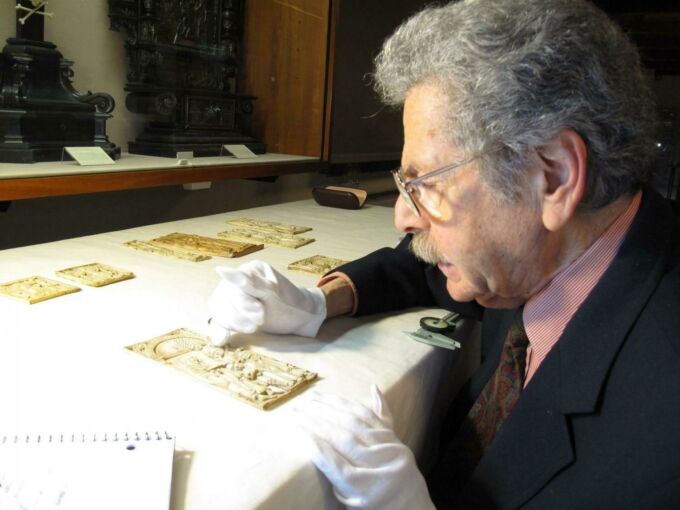October 01, 2019
Evan Pugh Professor connects art history and scientific inquiry

The discourse of art history has long privileged the eye, especially regarding questions of connoisseurship. Grounded in research, the visual is supplemented by archival documents to make a case of attribution or to determine the date of a work of art. However, keen observation and stylistic familiarity are only part of the process of authentication. Dr. Anthony Cutler, Evan Pugh Professor of Art History at Penn State, incorporates radiocarbon dating into his research in order to determine the dates surrounding Byzantine ivories.
Cutler is co-organizing and will participate in an international conference in London this spring that addresses scientific research, art history, archaeology, and the economics that surround the results of radiocarbon testing. Other illustrious participants include Paul Williamson, whose positions at the Victoria and Albert Museum included director of collections, acting deputy director, and emeritus keeper of the sculpture, metalwork, ceramics and glass, and Thomas Highman, deputy director of the Oxford University Radiocarbon Accelerator Unit. This conference will bring together scientists and scholars in an attempt to use scientific findings for humanistic purposes. Cutler's co-organizer is Alixe Bovey, who is the director of the Research Forum at the Courtauld Institute and a specialist in the art and culture of the later Middle Ages.
"Determining the date of an ivory is a classic example of using scientific technology to support artistic research," noted Cutler. "Radiocarbon dating can provide the date of an elephant's death, which proves that an ivory could not have been carved before that date. While older materials may be used for ivories, the technical process of finding the beginning date helps to narrow the date range and support the stylistic arguments made by connoisseurs."
Radiocarbon dating is the process of using the radioactive isotope of carbon to determine the age of an object based on the organic materials it contains. The amount of decay is calculated by the amount of carbon contained in the object. The carbon measurement creates an accurate date range for the object in question.
This scientific dating technique is useful in "spotting a fake." Cutler, who has traveled across the globe to examine ivories and recently traveled to Jordan for research, acknowledges that there is financial investment at stake when dealing in the economics of the art trade. Cutler successfully confirmed the age of an ivory leaf of the Symmachi diptych in the Victoria and Albert Museum (Fig. 1), first through his own experience and familiarity with ivory works as a connoisseur and then confirmed by radiocarbon dating experiments in collaboration with the Victoria and Albert Museum. This investigation proved that the panel was a Roman work, created in the late 4th or 5th century C.E. Tests concluded that the elephant whose tusk was used to create the work died between 70 and 350 C.E. with 95.4 percent probability. Cutler will discuss this particular project at the upcoming conference in London.
Cutler added, "The implications for the history of art are ever expanding by collaborating with our scientist colleagues. This conference is just one example of how we are learning from each other to benefit fields of research and, more broadly, advancing knowledge itself."
